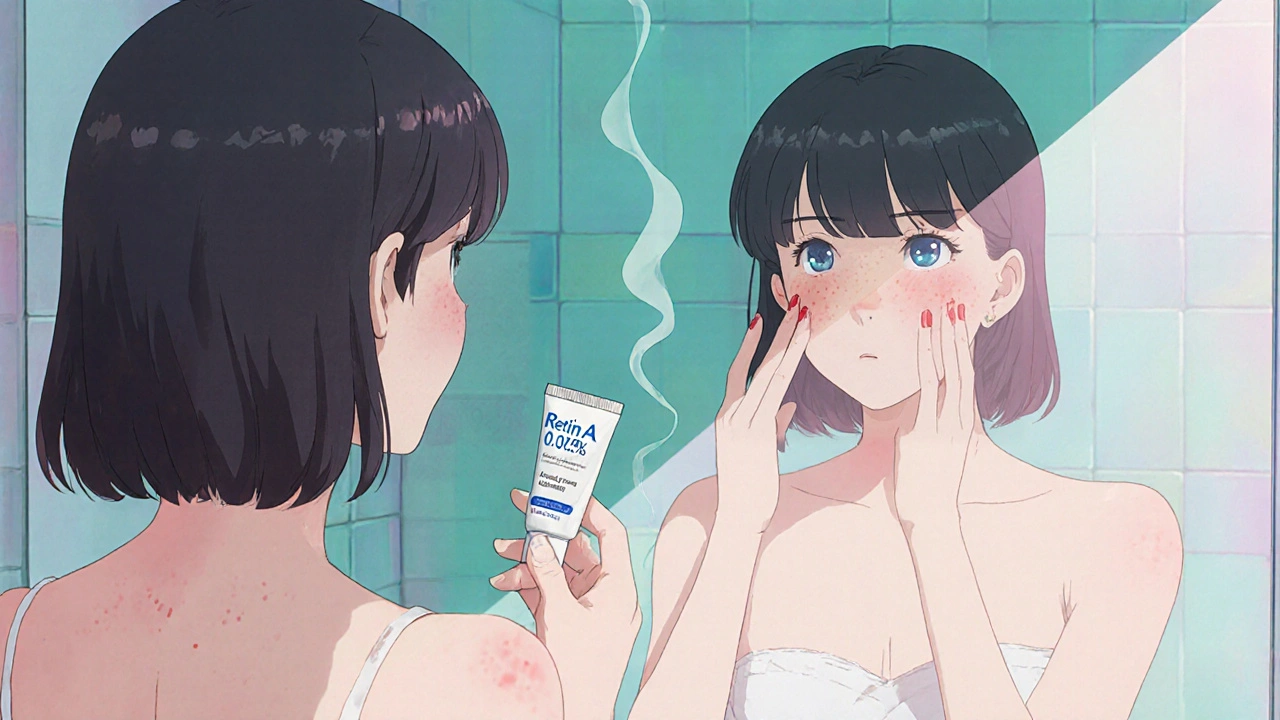Retinoid Alternatives: Safer, Natural Options for Skin Health
When you hear retinoid alternatives, substances that mimic the skin-renewing effects of retinoids without the harsh side effects. Also known as non-retinoid anti-aging ingredients, they help reduce fine lines, even out skin tone, and clear acne—without the peeling, redness, or sensitivity that often comes with prescription retinoids. Many people avoid retinoids because they’re too drying or cause flare-ups, especially if you have sensitive skin, rosacea, or are pregnant. But you don’t have to give up on results. There are real, science-backed options that work just as well for most people.
One of the most talked-about bakuchiol, a plant-derived compound from the babchi plant that acts like retinol but without the irritation. Also known as natural retinol substitute, it’s been shown in studies to improve wrinkles and pigmentation after 12 weeks of use—similar to retinol, but gentler. Then there’s niacinamide, a form of vitamin B3 that strengthens the skin barrier, reduces redness, and controls oil. Also known as vitamin B3, it’s a multitasker: it fades dark spots, calms acne, and boosts hydration. Unlike retinoids, it doesn’t make skin sun-sensitive, so you can use it morning and night.
Another solid option is adapalene, a synthetic retinoid that’s available over-the-counter and milder than tretinoin. Also known as Differin, it’s often recommended for acne-prone skin because it’s less irritating than prescription retinoids but still clears pores and prevents breakouts. For those avoiding all retinoids entirely, azelaic acid, a naturally occurring acid found in grains, that fights acne and reduces redness. Also known as Skinoren, it’s safe during pregnancy and works well for rosacea and post-acne marks.
These aren’t just trendy ingredients—they’re backed by clinical data and used by dermatologists for patients who can’t tolerate traditional retinoids. You’ll find them in everything from serums to moisturizers, often combined with antioxidants like vitamin C or peptides to boost results. The key is consistency: unlike quick fixes, these alternatives take 6–12 weeks to show real changes. But when they work, the results are steady, sustainable, and kind to your skin.
What you’ll find below is a collection of real comparisons—between bakuchiol and retinol, niacinamide and tretinoin, and other combinations that people actually use. These aren’t marketing fluff. They’re side-by-side breakdowns of what works, what doesn’t, and what’s worth the money. Whether you’re dealing with acne, aging, or just want smoother skin without the burn, the guides here will help you cut through the noise and pick what’s right for your skin—not someone else’s routine.

Retin A 0.025% (Tretinoin) vs Other Retinoids: Comprehensive Comparison
A side‑by‑side look at Retin A 0.025% (tretinoin) versus popular retinoid alternatives, covering efficacy, side‑effects, usage tips, and how to pick the right one for your skin.
